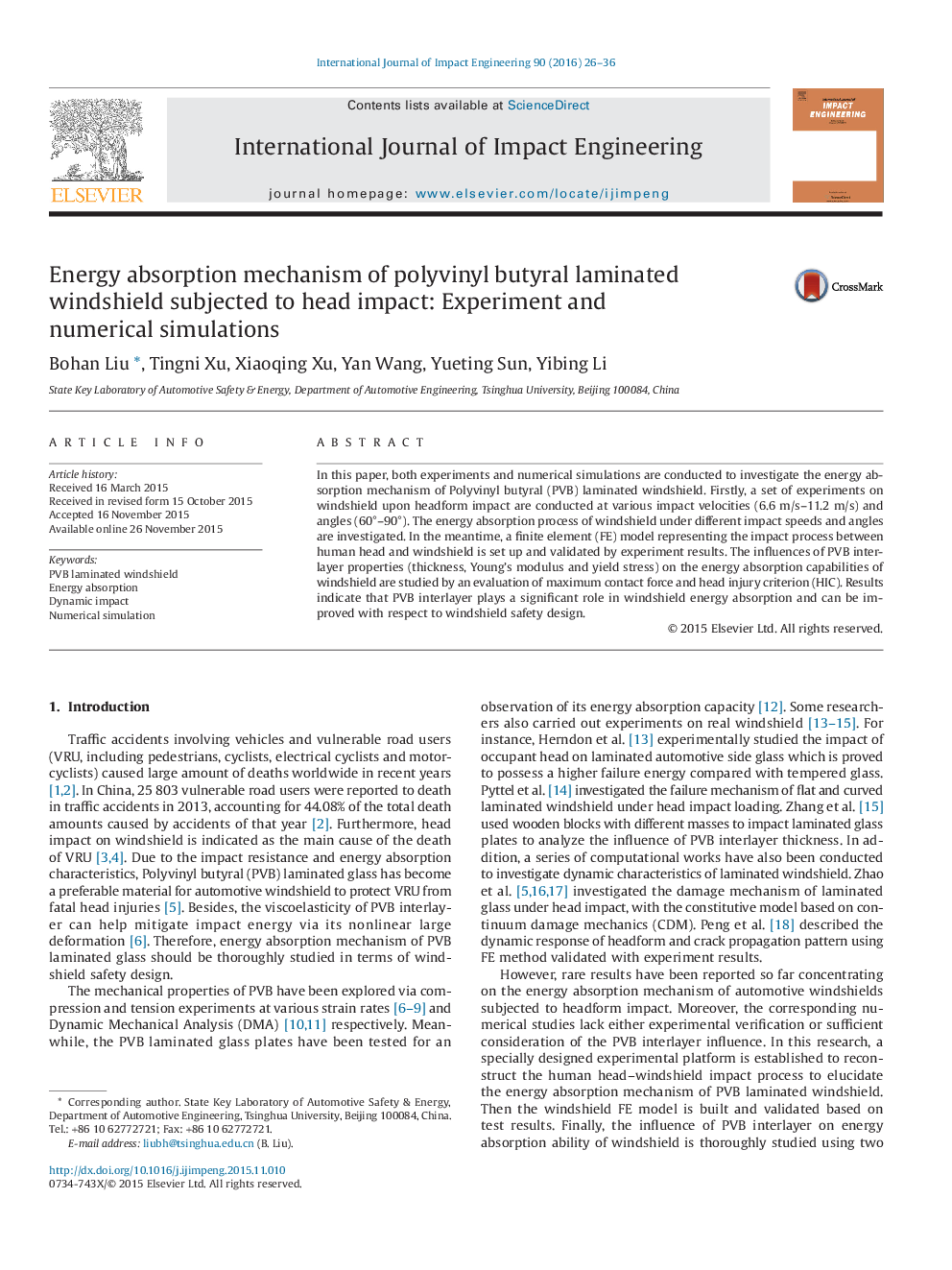| Article ID | Journal | Published Year | Pages | File Type |
|---|---|---|---|---|
| 776346 | International Journal of Impact Engineering | 2016 | 11 Pages |
•Energy absorption of windshield is studied under different impact conditions.•Mechanical response and energy absorption mechanism in three stages are presented.•Fmax between head and windshield is exclusively determined by glass layer.•Glass failure, crack propagation and PVB tension deformation contribute to HIC.
In this paper, both experiments and numerical simulations are conducted to investigate the energy absorption mechanism of Polyvinyl butyral (PVB) laminated windshield. Firstly, a set of experiments on windshield upon headform impact are conducted at various impact velocities (6.6 m/s–11.2 m/s) and angles (60°–90°). The energy absorption process of windshield under different impact speeds and angles are investigated. In the meantime, a finite element (FE) model representing the impact process between human head and windshield is set up and validated by experiment results. The influences of PVB interlayer properties (thickness, Young's modulus and yield stress) on the energy absorption capabilities of windshield are studied by an evaluation of maximum contact force and head injury criterion (HIC). Results indicate that PVB interlayer plays a significant role in windshield energy absorption and can be improved with respect to windshield safety design.
